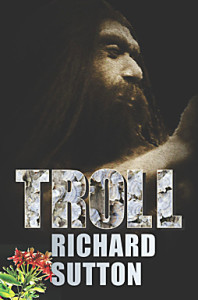Mary Gottschalk's Blog, page 9
September 23, 2013
The Price of Nice
Don’t change yourself just to make someone love you,
be yourself and let the right one fall for you.
 One of the most challenging aspects of life is finding the right line between the compromises you have to make for the relationship to work and the compromises that diminish your own integrity and sense of self (“the price of nice”). It is a challenge my two key characters in A Fitting Place face on a regular basis, although in very different ways.
One of the most challenging aspects of life is finding the right line between the compromises you have to make for the relationship to work and the compromises that diminish your own integrity and sense of self (“the price of nice”). It is a challenge my two key characters in A Fitting Place face on a regular basis, although in very different ways.
I suspect there are very few people who have not, at some point, agreed to do something they didn’t really want to do, or given up something they did want because a friend or lover didn’t approve.
My concern here is not with isolated incidents but rather with a consistent pattern of deferring to someone else, a consistent willingness to subjugate one’s own desires and needs to the desires and needs of partner or friend.
This pattern is often referred to in the psychology literature as “people pleasing.” Typical examples include:
Trying to be (or do) what you think “the other” wants you to be (or do) without actually checking to find out;
Failing to ask for what you need or want, for fear your friend or lover will find you foolish, or perhaps too demanding;
Trying to be perfect when perfection is not required.
The motive behind these patterns is, of course, to be loved and/or appreciated, but as I learned from painful experience in my first marriage, it can have just the opposite effect.
This is the price of nice.
If you are a people pleaser, you may find yourself angry because your desires are not being considered, your needs are not being met or your partner seems to be taking advantage of your good nature.
If you are the partner of a people pleaser, you may feel guilty when your partner is so obviously trying to please you, but doing so in ways that do not, in fact, meet your needs.
How do you establish a meaningful degree of intimacy when one of the partners does not trust the other to love or appreciate who or what they are … when one of the partners does not the trust the other to be honest about what s/he feels or thinks?
Through both therapy and hard work over the years, I have learned to put more trust my own judgment, which has allowed me to trust others more. Because of that, I no longer fit the people-pleasing mold I had in my marriage, but it is a tendency I still struggle with almost daily.
Have you paid the price of nice? How have you dealt with it? Do you still struggle with it?
The post The Price of Nice appeared first on Mary Gottschalk - Author.
September 16, 2013
A Good Friend is Like Mellow Wine
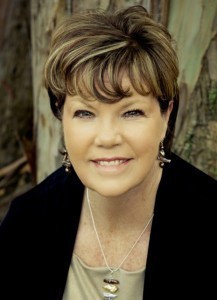 I would like to welcome Katherine (Kas) Sartori, a California author of fiction who also writes on travel and creativity. Her thought-provoking comments below are in response to my recent blog on the role of honesty in friendship.
I would like to welcome Katherine (Kas) Sartori, a California author of fiction who also writes on travel and creativity. Her thought-provoking comments below are in response to my recent blog on the role of honesty in friendship.
Sometimes telling the truth to a close friend is like watching a tight-rope act. How many times have we tried to save someone from sorrow and distress and, rather than stand by and watch them fall, we urge them to take the next, difficult step toward happiness? Mary Gottschalk’s penetrating questions about the risks of honesty in friendship stirred up many thoughts about its fragility but, most of all, its necessity.
I remember after I’d been divorced for three months, a friend gently suggested I venture out to a singles group, even though my thoughts and emotions were mired in failure. Dating was the last thing I wanted to do and I told her so. I still remember the angry tone I used and the way I turned and walked away from her. Nevertheless two months later, she stared at me with eyes that meant business. “Stop feeling sorry for yourself. It’s time.” I finally had to admit she was right, so I forced myself to do it. Two months later I met a wonderful man, who eventually became my husband. In fact, this month we celebrated our twenty-fifth wedding anniversary.
What if my friend had kept silent, telling herself that my life wasn’t any of her business? I’ve met several acquaintances over the years who, though full of despair whenever the opposite sex was mentioned, vowed they would never date again after their divorce. I wonder if any of their friends crossed the line to tell them the truth? Thank God my friend’s honesty, mixed with genuine concern, helped to change my life.
When we’re weary and care-worn, a friend’s smile, listening ear, and candid, understanding words can lift our hearts, helping us to take the next step.
I’m sure you can think of singular friends who’ve been there for you in your darkest hours. A friend who “walks the walk” with you, calling regularly to make sure you’re okay, offering suggestions to help you, bringing a gift or a meal to wipe away your certainty that you’re all alone. They say that a true friend is one of the most sought after gifts in life. Some claim that friends like this are few and far between, that if we have three staunch friends it is highly unusual. If we have even one, we are indeed rich!
Celie O’Rourke, the heroine of my novel, The Chosen Shell, has such a friend. Celie, who is caught between her decision to serve God and her hunger for love, depends so greatly on Lupe that “a feeling like mellow wine suffused Celie at the sight of her friend.” Who doesn’t need a friend like this? Someone who exudes genuine caring, so much so that even if we grit our teeth and hold our head up high to try to hide our confusion and despair, our friend sees through it and extends a hand and a hug to help us. That’s the kind of person Lupe is.
The Chosen Shell is both memoir and fiction, and there was “a Lupe” in my life. We met at eighteen just after we’d entered the convent. I liked her immediately, her constant smile, her zany sense of humor, her forthright spirit, her exuberance about everything. I tried to be a good friend to her too, and found a way to help her wipe away her own despair, by tutoring her in writing until she finally pulled A’s in our college English Composition classes. But she, like Sister Lupe in my story, didn’t exactly fit into convent life. Maybe that’s why I liked her, but it was also her honesty I cherished. When I faced a major turning point in my life, it was her frank advice that tipped the scales between depression and elation. That’s why “Lupe” is still my friend today.
Jung says that we choose certain friends because their soul reaches out to us with qualities we do not have. Have you noticed that when you’re feeling timid or gun-shy, a friend can suggest a new path and soon you’re surprised that you’re even considering it? When you’re too serious and uncertain, it’s your friend who jokes you out of your mood and challenges you to go ahead with your plan.
Yes, friends can be a lighthouse as we navigate through fog and storms. And when we’ve triumphed over legions of difficulties and won a prize or a new job or followed a new dream, it’s our friend who’s there to celebrate with you.
Friends are one of the most precious gifts of life. Like mellow wine, they suffuse our hearts with love.
Kas is the author of A Chosen Shell and is working on another novel entitled Lily and Eve. You can learn more about Kas at www.katherinesartori.com. To follow Kas on her travels, see www.dreamtravelerkas.blogspot.com
This blog continues the discussion on themes in my novel. I welcome comments and guest blogs from my readers based on their own experiences. Let me know if you’d like to do a guest blog on one or more of the issues relevant to A Fitting Place.
The post A Good Friend is Like Mellow Wine appeared first on Mary Gottschalk - Author.
September 9, 2013
The Lessons of a Rebound Romance

Have you ever had a rebound romance?
If you have, you’re not alone. The term is often credited to Mary Russell Mitford. Back in 1830, she wrote that there is “nothing so easy as catching a heart on the rebound.” The term typically refers to a love affair that follows close on the heels of the break-up of a long- term relationship.
Not surprisingly, many therapists and family counselors advise against a rebound romance. Common sense would tell you much the same thing. At a point when a failed relationship causes you to doubt yourself—your judgment, your attractiveness, your ability to sustain an intimate relationship—you’re vulnerable to the blandishments of anyone who offers sympathy and support.
In that state of mind, the character and values of your new lover may be far less important than having someone to distract you from the pain of your loss. In that state of mind, you may experience an unusual but ultimately false intimacy, one that stems more from your need to work out painful emotions than from an underlying trust or honesty. There is a considerable risk that, as you begin to heal from the original loss, you’ll find that the rebound lover is not quite you’d hoped for, and perhaps altogether inappropriate for the person you really are and the lifestyle you want to lead.
This, of course, means that there are significant risks for your new love interest as well. To the extent you’re still emotionally bound to the last love, you’re also emotionally unavailable. In other words, you may be unable to consider the needs of your new lover. You may be unwilling to take the necessary steps to build a grounded, sustainable relationship. Particularly if the rebound romance is short-lived, your new partner may feel, with some justification, that he or she has been used or mislead.
Rebound relationships are a popular theme of romantic fiction, Chick Lit and celebrity news media. While A Fitting Place doesn’t fit into any of those genres, my novel takes advantage of the dramatic possibilities of a rebound relationship with its heightened emotional intensity in the early stages and its potential for conflict once the initial euphoria wears off.
But a rebound romance with a woman offers another more substantial benefit. Like so many women (myself included), my protagonist Lindsey brought a host of gender-based assumptions into her marriage, socially accepted notions about the respective roles of husband and wife. Lindsey begins to accept responsibility for the failure of her marriage only when her rebound love affair begins to crumble for many of the same reasons her marriage fell apart.
For Lindsey, a rebound romance opens the door to a new understanding of herself and her own value system.
Have you had a rebound relationship? What did you learn from it?
This blog continues the discussion on themes in my novel. I welcome comments and guest blogs from my readers based on their own experiences. Let me know if you’d like to do a guest blog on one or more of the issues relevant to A Fitting Place.
The post The Lessons of a Rebound Romance appeared first on Mary Gottschalk - Author.
September 2, 2013
Conflict is Key
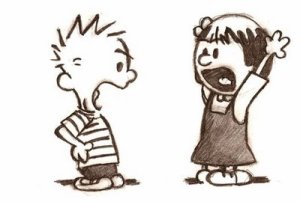 Every good fiction writer knows that conflict is key. The main characters in a novel must have clearly defined desire lines … something they want badly enough to persevere in the face of every obstacle … and internal conflicts give their story depth and intrigue.
Every good fiction writer knows that conflict is key. The main characters in a novel must have clearly defined desire lines … something they want badly enough to persevere in the face of every obstacle … and internal conflicts give their story depth and intrigue.
Establishing that desire line in the reader’s mind is a particular sort of challenge when the key characters have desire lines based on abstract goals–making a contribution to the world or being seen as loyal and dependable–rather than concrete goals such as becoming president of the U.S. or finding the murderer.
As with all good fiction, the story arc must still be based on desire lines that conflict and build tension. But where the goals are abstract, many of the problems the characters are trying to solve have been created by the characters themselves. Throughout the story, the characters are often the source of the obstacles that get in the way of a solution.
Just like in real life. This is the dilemma most of us live with until we break out of our comfort zone and learn to do things in a different and more productive way.
In fiction, as in life, The Enneagram system, which classifies personality types based on unconscious motivation, can be helpful. As I’ve noted in previous blogs, each of the personality types can be evaluated in terms of the effectiveness with which they go about converting their abstract goals into real world accomplishments.
In A Fitting Place, my protagonist (Lindsey) is a “thinker” who takes prides in being knowledgeable, capable and self-reliant. On her good days, she is thoughtful, perceptive, and a good listener. On her bad days, she can be self-absorbed, secretive, and remarkably unaware of the emotional mood of her environment.
In contrast, my antagonist (Joan) is a “missionary” who loves to be helpful and nurturing. On her good days, she is compassionate, sympathetic and highly attuned to how others are feeling. On her bad days, she is possessive, manipulative, and masterful at inducing a sense of guilt into those who reject her overtures.
Because both my characters are flawed, the opportunities for mayhem and misunderstanding abound … as do the possibilities for significant personal growth and development.
A Fitting Place is a story in which the challenges, mis-steps and successes of characters in conflict should be familiar to readers who (like most of us) have both good days and bad. Good days, when we are happy with who we are and how we respond to the people around us. Bad days, when we are our own worst enemy.
Do you ever have days on which you are your own worst enemy?
This blog continues the discussion on themes in my novel. I welcome comments and guest blogs from my readers based on their own experiences. Let me know if you’d like to do a guest blog on one or more of the issues relevant to A Fitting Place.
More information about The Enneagram can be found in past blogs on this site, as well as here.
The post Conflict is Key appeared first on Mary Gottschalk - Author.
August 26, 2013
Responsibilities of Friendship-Honesty in the Balance
 As I left the movie theater after seeing Blue Jasmine, Woody Allen’s latest film, I was not thinking so much about failed lives as about the role of honesty in friendships, a recurring issue for Jasmine, and one that looms large in my upcoming novel, A Fitting Place.
As I left the movie theater after seeing Blue Jasmine, Woody Allen’s latest film, I was not thinking so much about failed lives as about the role of honesty in friendships, a recurring issue for Jasmine, and one that looms large in my upcoming novel, A Fitting Place.
It is all well and good to say that friends are honest with each other, but what does that mean in practice? Do we have an obligation to share our opinions just because we have them?
Where is the boundary between honesty and cruelty, between honesty and interference, between honesty and acceptance of friends as they are? How do you find the balance between being honest and being kind? How do you find the line at which honesty—or the lack of thereof—makes a charade of the friendship without actually crossing the line?
Where does the boundary lie when people you care about make life style decisions you don’t agree with? It can be painful to watch a friend making the wrong job choice, or spending money unwisely, or picking an unsuitable romantic partner. But what do you accomplish when you offer an opinion that a friend does not want to hear … when you make a recommendation that a friend is emotionally or psychologically unable or unwilling to act upon? And who’s to say that your opinion is correct? What seems self-evident from your perspective may be inappropriate and/or impossible in a friend’s situation.
Where does the boundary lie when a friend is being betrayed, perhaps by a spouse or a business partner? Do you have an obligation to pass on that information? Put differently, do you have a right to pass on that information? What if your friend already knows and is trying to avoid dealing with the issue or trying to deal with it in a non-public way? Confronting a friend with the fact of a betrayal may exacerbate the situation rather than improve it.
For myself, I lean towards telling my friends what I think and appreciate having friends who are forthright in their dealings with me. But I am much more cautious than I used to be. The fact that I have an opinion doesn’t mean that I have to share it.
How about you? Where do you draw the line?
This blog continues the discussion on themes in my novel. I welcome comments and guest blogs from my readers based on their own experiences. Let me know if you’d like to do a guest blog on one or more of the issues relevant to A Fitting Place.
The post Responsibilities of Friendship-Honesty in the Balance appeared first on Mary Gottschalk - Author.
August 18, 2013
Writing for My Reader
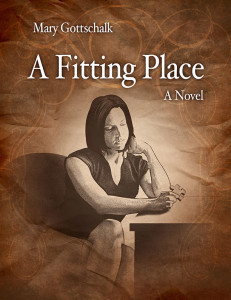 In writing A Fitting Place, my goal has always been a book that would be considered literary fiction, a high quality novel with richly developed characters that would reflect key elements of the human condition.
In writing A Fitting Place, my goal has always been a book that would be considered literary fiction, a high quality novel with richly developed characters that would reflect key elements of the human condition.
As I get closer and closer to the final draft, however, I ask myself the very question Richard Sutton posed last week: how do I make sure it resonates with my audience?
I am at the leading edge of the baby boomers, writing a novel about “mid-life coming-of-age.” Ideally, I am writing for three generations of readers, both male and female. I am writing for my own generation, assuming that my protagonist, Lindsey Chandler, will echo the experiences many of us had in our 40’s. I am writing for Generation X, in their 40’s now, hoping to provide encouragement to those in the throes of mid-life crises. I am writing for the Millennial Generation, with an eye to offering a bit of insight into the challenges they will face as they age.
But how do I talk about the love affair between two women? My generation made sexual freedom a key part of the social fabric, but that freedom was commonly seen to apply to male-female relationships, rather than to same-sex relationships.
And when people did talk about such relationships, they did so using labels—gay, queer, butch, dyke, bi-sexual—that had powerful positive or negative connotations depending on where you stood. Many of the women of my generation who had sexual encounters or love affairs with a woman did not talk about it, as the term “lesbian” had less to do with sexual orientation or preference and more to do with militant feminism.
The Millennials seems to look at sexuality much differently. Many abjure the labels that define sexuality, viewing it as fluid, akin to the spectrum of sexual types described by Alfred Kinsey (in 1948). His classification ranged from exclusively heterosexual to exclusively homosexual, with “un-labeled” gradations in between, depending on an individual’s preference for one or both types of sexuality.
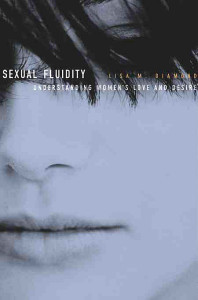 In a remarkable 2008 book, Sexual Fluidity, based on a decade of longitudinal research on women, Dr. Lisa Diamond proposed the increasingly accepted theory that sexual attraction, particularly for women, is based more on personal and emotional attraction than on gender, and is often unrelated to sexual or gender identity.
In a remarkable 2008 book, Sexual Fluidity, based on a decade of longitudinal research on women, Dr. Lisa Diamond proposed the increasingly accepted theory that sexual attraction, particularly for women, is based more on personal and emotional attraction than on gender, and is often unrelated to sexual or gender identity.
A key theme in my novel is, in fact, sexual fluidity as defined by Diamond. While the second draft of my novel was done before I read her book, the final version is much influenced by the clarity of her thinking.
But thinking more clearly about sexual fluidity does not change the fact that I instinctively write using the language I learned in my youth. For A Fitting Place to reach the audiences I want, I need to rely heavily on Richard Sutton’s “reader on my shoulder.”
What are the topics you find hard to talk about or write because the language doesn’t meet your needs?
To learn more about Lisa Diamond, click on the book.
The post Writing for My Reader appeared first on Mary Gottschalk - Author.
August 12, 2013
I Write for Myself . . . Right?
 This week, my guest is Richard Sutton, a New Yorker who likes to write historical fiction and fantasy.
This week, my guest is Richard Sutton, a New Yorker who likes to write historical fiction and fantasy.
His comments were in response to my recent blog (July 28th) on breaking out of socially accepted gender roles, which is a key theme in my forthcoming novel, A Fitting Place.
I Write for Myself . . . Right?
It’s a statement overheard in variations around literary water coolers: “…writers should write primarily to please ourselves.” But visit any online bookselling site with reader reviews, and you’ll find examples of how writers miss the mark with readers. I’ve read comments on my own books that made me wonder how I’d so thoroughly misfired. Now, on my fifth novel, I’ve finally learned to take the time to do it right.
It always begins with the story, but our tales can take us down many twisting paths. They’ll keep us awake at night, wondering what might happen. They’ll enter our conversations or keep us so distracted that conversation might well become impossible. And then the idea of sharing the story outside our writing warren begins to whisper in our ears. About the same time, our writer’s ego starts telling us of the joys of unbridled discovery lying just outside of our comfort zone. How much truth should we reveal? How raw is raw? Can I take the voice someplace I’ve never actually been before? Who do I listen to? (Fiendish laughter fills in…)
We’ve all been there.
Listening for the Reader’s Voice
The promise of turning over fresh ground may keep writers producing, but without the guiding influence of the reader’s voice whispering Is anyone going to want to read this drivel?, I’d produce lots of useless plonck. In my own far-flung stories, there’s always a lesson waiting to be heard. Sometimes, what pours from my fingertips ends up so sermon-like that any reader would drop off to sleep in seconds. Sensing this, I ask, how do I disguise this lesson? How do I make it a juicy morsel instead of a July pot roast? It’s writing for potential readers that keeps it in line, and hopefully, keeps it tasty.
One of the first things I learned is that I‘ll never write anything that connects with everyone. Readers, like writers, are individual and idiosyncratic, but we share common human experiences. It’s the pursuit of that common ground that makes compelling writing. Concepts not tempered with that pursuit might be brilliant, like fireworks in the night sky, but they only last a fraction of a second. It’s not only the “what if…” that guides my writing, but also the “who is it for?” sitting on the other shoulder.
Balancing the Writer and the Reader
This balancing act can put you in odd corners. I’ve had chapters fly off my fingertips to later discover only a mental gymnast could get through the pages. Combining where I think the story should go with the most reliably conceivable way for it to go is a struggle. On one side is my need to create something glorious in its unique achievement (that might be overstating it just a bit…). On the other is the need to create something in which readers will recognize themselves.
My solution lies in two primary directions—in the weaving of the threads of the story itself and in drawing the characters who populate the story. We want our characters to be memorable, but we can’t forget who’s supposed to remember them. Our characters must express mutually shared feelings. They must experience life stages we’ve all gone through. If we simply throw up a cardboard cliché, readers may recognize the character or plot turn easily, but find little personal connection. If we make our characters so convoluted that only we can truly know them, we fail on a different level.
Fully defining each character requires lots of decisions. Once made, it can take a lot of pages to discover a decision was wrong. To add insult to injury, finding out usually comes from someone with a fresh viewpoint. The missteps in an early draft are necessary ingredients for finding the flesh and blood later on.
Is there a Reader on your Shoulder?
Turns out, the “reader” sitting on our shoulders will have an opinion about every single paragraph. Finding a way to adapt a tale to readers’ needs without totally losing the captivating thread that first inspired the story is what honing your craft is all about. We may have a strong belief in our idea when we conceive a story, but when we actually begin writing, we may discover that the pacing of that form, or the nature of those characters simply isn’t working. So we test other genres or strike out blindly, again and again, trying different styles until we hit one that feels right for the tale being told.
It takes time, and as far as I know, there’s no single set of rules or guidelines to steer every writer into the perfect berth. No up-to-date road maps, no local charts. We only get there by travelling different roads, following our own particular journeys to their ends and remembering the details of each trip.
Lots of completed stories will just attract cobwebs, lying in the bottoms of real or virtual drawers; but eventually, after several rewrites and a bit of luck, we’ll learn to listen as much as we’ve learned to shout. We’ll find our readers… and they will find us.
Once an Oregon commune-living goatherd, Richard Sutton hitch-hiked to New York City after college in 1973 and never looked back. He’s worked as a ski mechanic, illustrator and designer, ad man, marketing wonk, rigger and Indian trader. Closing his gallery after nineteen years, he finally was able to write more or less full time, and two years later, his first novel, The Red Gate, an historical fiction/fantasy set in Ireland was published. It was followed by The Gatekeepers (2010), Home (2012) and Troll (2012). He lives in Metro NY, writes, gardens, sails and chases his cats, his wife and family in his spare time.
Richard’s website: http://www.sailletales.com.
Check out his most recent book, Troll: http://www.amazon.com/Troll-ebook/dp/B009OK1UP6
This is the fifth in my series on key themes in my forthcoming novel, A Fitting Place. It is intended to be a forum where readers can share other perspectives based on their own experiences. I hope you’ll join in the discussion, with a comment or a guest blog.
The post I Write for Myself . . . Right? appeared first on Mary Gottschalk - Author.
August 4, 2013
Growing Past Self-Defeating Behavior
 Today, I welcome Kathleen Pooler as the first of my readers to comment on critical issues relevant to my novel, A Fitting Place.
Today, I welcome Kathleen Pooler as the first of my readers to comment on critical issues relevant to my novel, A Fitting Place.
Kathleen is a retired Family Nurse Practitioner who is working on a memoir and a sequel about how the power of hope through her faith in God has helped her to transform, heal and transcend life’s obstacles and disappointments: domestic abuse, divorce, single parenting, loving and letting go of an alcoholic son, cancer and heart failure to live a life of joy and contentment. She believes that hope matters and that we are all strengthened and enlightened when we share our stories.
Based on insights from her own life, Kathleen addresses the challenges faced by those, like my protagonist Lindsey, who come of age at mid-life rather than in their teens or early adulthood.
“And the day came when the risk to remain tight in a bud was more painful than the risk it took to blossom.” Anais Nin
I haven’t met Lindsey, Mary Gottschalk’s protagonist in her upcoming novel, A Fitting Place, yet, but I already know we have a few things in common.
 We both had self-defeating behaviors that kept us from living our lives fully and happily. I share my journey through these behaviors in my current memoir-in-progress, Choices and Chances: My Jagged Journey to Self (working title).
We both had self-defeating behaviors that kept us from living our lives fully and happily. I share my journey through these behaviors in my current memoir-in-progress, Choices and Chances: My Jagged Journey to Self (working title).
Truth is stranger than fiction so I feel the advice from my own lived-experience may help Lindsay. I have no doubt she is faced with overcoming her own self-defeating patterns.
What will it take for Lindsey to break the cycle of her own self-inflicted pain? I only have to look at my own story to find the answers. If I could sit across from Lindsey, I’d share my story with her.
I’d tell her that after years of mismatched choices and broken dreams, I finally figured it out:
Clinging to the familiar, the path of least resistance, kept me locked in unhealthy patterns for years. I was “safe” but the choices I was making were not in my own best interest.
Willingness to accept my role in perpetuating the pain takes courage. If I own my faults and failures, I can also own my successes.
My self-defeating patterns were repeated until the pain of holding on outweighed the pain of letting go.
Self-forgiveness was the first step in healing my past hurts. It helped me to move forward and make the changes I needed to make.
When I was willing to face my part in creating my own pain and forgive myself for pain inflicted upon myself and others, I could clear the path and move on to a life of peace and fullness. I have a choice. It’s like being in a prison cell with the door open and continuing to sit there. I can take a step outside that prison cell anytime.
When I look beyond an obstacle to see the lesson it has in store for me, I accept obstacles as part of my life.
I can be in charge of shaping my own attitudes.
In breaking my own cycle of pain, I can focus on all that I have to be grateful for, finding the support I need and nurturing my soul.
Once I am able to look honestly at myself, accept the role I have played in outcomes, and forgive myself, I am free to live life on my own terms.
Once I find this freedom, I can honor my own story, continuing to hope—never, ever giving up.
Hope matters.
Lindsey, the choice was mine all along. I can be empowered to create my own happiness, avoiding any future self-defeating behaviors. I have gone on to live a life of peace and joy, on my own terms.
I hope the same for you and I am looking forward to hearing your side of the story.
Kathleen’s experience is relevant to all of us, but I welcome points of view based on other experiences. What advice would you give Lindsay on facing and overcoming self-defeating behaviors?
Kathleen blogs weekly at her Memoir Writer’s Journey blog: http://krpooler.com and can be found on Twitter @kathypooler and on LinkedIn, Google , .
July 28, 2013
Gender Roles and Your Comfort Zone
 A recent article in The Atlantic Monthly explored the possibility that same-sex marriages are “happier” than traditional marriages between a man and a woman. It raised a fascinating question about the impact of gender on staying in or stepping out of one’s comfort zone.
A recent article in The Atlantic Monthly explored the possibility that same-sex marriages are “happier” than traditional marriages between a man and a woman. It raised a fascinating question about the impact of gender on staying in or stepping out of one’s comfort zone.
The rationale was that a same-sex couple cannot fall back on traditional gender roles for managing day-to-day activities such paying the bills, taking care of the kids, or doing the laundry. They have no choice but to negotiate each and every role within the relationship.
That notion stands in marked contrast to the many stories I’ve heard about talented and capable people, but particularly women, who felt they had disappeared or become invisible after a decade of marriage. I was one of them. Lindsey, the protagonist in my novel, A Fitting Place, is another.
As I noted last week, most of us, flawed human beings that we are, choose partners who replicate emotional behavior patterns–the comfort zone–familiar from childhood. For the relationship to be successful, both partners need to break the habitual behaviors of youth and adopt more intentional behaviors relevant to the current circumstances.
One of the key themes in A Fitting Place is the extent to which social norms about gender roles in marriage make this adjustment particularly difficult. Even in this post-feminist world, gender stereotypes persist. Men are logical, woman are emotional. Men are strong, women are weak. Men are the leaders and decision-makers, women are the facilitators.
These stereotypes can have a powerful but all-too-often invisible impact on the day-to-day choices both men and women make in a marriage. In same-sex relationships, that invisible straightjacket is missing. It is easier—not easy, but easier—to distinguish between what you want to do and what you do because it is expected of you.
This issue is at the heart of Lindsey’s dilemma. Having all-but-disappeared inside a traditional marriage, she is shocked to discover that she is disappearing once again inside a powerful and compelling love affair … even though it is with a woman. No longer able to blame gender roles and societal expectations, she is forced to look in the mirror.
This is the third in my series of blogs on themes in my novel. I hope to provide a forum where my readers can offer comments and insights based on their own experiences. Let me know if you’d like to do a guest blog on one or more of the issues relevant to A Fitting Place.
The post Gender Roles and Your Comfort Zone appeared first on Mary Gottschalk - Author.
July 21, 2013
Thoughts on “The Comfort Zone”
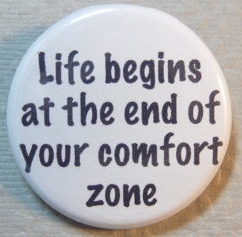 What image do you get when you think of a comfort zone? Is it more like a nest … or a bunker?
What image do you get when you think of a comfort zone? Is it more like a nest … or a bunker?
Both images connote safety or protection, but from very different perspectives. A nest evokes feelings of warmth, security and contentment, while a bunker suggests protection from imminent danger.
If you push the metaphor a bit further, however, the two are not so different. While you have to leave the nest if you want to expand your horizons, doing so makes you vulnerable to a host of dangers, just like leaving the bunker. And if you don’t leave the nest before the resources run out, you’re very likely to experience a slow and painful death, much as you would if you couldn’t ever leave the bunker.
There is a considerable body of literature on the subject of comfort zones as they apply to emotional behavior and responses. As I was coming of age in the 1960’s, Eric Berne gave us “Games People Play.” He didn’t call them comfort zones, but he defined a series of models for adults who adopt superficially reasonable but ultimately destructive roles based on values and behavior patterns developed during childhood.
Today, much of the psychological literature views the emotional “comfort zone” as the spectrum of the behaviors and emotions that an individual is willing to allow. Put another way, the comfort zone sets the emotional and relationship boundaries beyond which you will not go.
The dilemma is that one’s comfort zone may be familiar, but it isn’t necessarily “comfortable.” Too often, childhood behavior patterns that seemed to minimize pain have the perverse effect of re-creating the very situations we were trying to avoid. When I married, I chose a man with many of the characteristics of my mother, and then railed against him for his failure to heal the wounds of my dysfunctional childhood. It was only by stepping outside of my comfort zone—by literally sailing away from family and societal expectations—that I learned how many of the wounds incurred during my marriage were self-inflicted.
The notion of a comfort zone is the key metaphor that drives my novel, A Fitting Place. My protagonist, Lindsey, is hurled forceably out of what she assumes to be a comfortable marriage, a well-furnished nest in which she can teach her daughter the skills she needs to fly on her own. But once out of that nest, Lindsey comes to view her marriage as a bunker, a place in which she had constantly been on guard against demons from her own past.
Her challenge is to confront those old wounds, come to understand her role in building that bunker, and find a more productive way to deal with old and new wounds going forward.
This is the second in a series on themes that recur throughout my novel. I hope to provide a forum where my readers can offer comments and insights based on their own experiences. Let me know if you’d like to do a guest blog on one or more of the issues relevant to A Fitting Place.
The post Thoughts on “The Comfort Zone” appeared first on Mary Gottschalk - Author.


